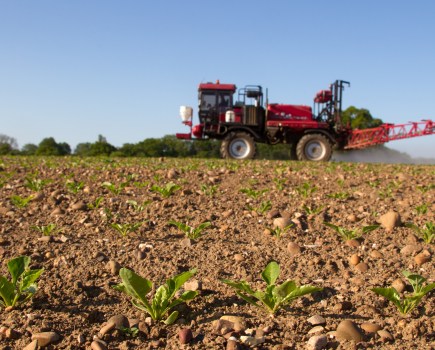The team at PGRO has refined the technique to commercialise a rapid molecular test for the detection and quantification of the brassica clubroot pathogen Plasmodiophora brassicae in the soil using an outline protocol provided by an AHDB-sponsored project,
“PGRO has launched the first commercial test from its new Molecular Diagnostics facility, and it is one that will be invaluable to close rotation intensive vegetable producers as well as to oilseed rape growers – which is the most commonly grown brassica crop in the UK,” announces Roger Vickers, PGRO’s Chief Executive.
“We believe it will have significant risk reduction and cost control benefits to become an integral part of all brassica growers clubroot management plans. We hope this will be the first of several commercial tests to benefit growers and advisers available over time from our new facility.”
The test was launched on 1 August and growers can now send their field soil samples to the PGRO for testing. Once the levels of pathogen have been identified, growers will receive a risk indicator for their soil, with the level of risk defined on a 1-3 scale (slight, moderate or severe) according to infection levels identified as set out in AHDB Horticulture Project CP 099a.
Dr Lea Wiesel, PGRO Plant Pathologist, who led the refinement of the test protocol, comments that clubroot is probably the most damaging problem affecting brassica crops in the UK: “For oilseed rape growers, a crop that is still a key component of arable rotations, it causes significant, or even complete, crop losses when infection is severe, and is exacerbated by close rotations. The pathogen responsible (Plasmodiophora brassicae) can persist in soils for at least 15 years, so cannot be managed practically by extending rotations.
“Varietal resistance remains the most effective method of clubroot control, but the resistance source is not effective against all pathotypes and resistance breaking strains have become more prevalent.
“Plants can wilt in hot, dry weather, be very stunted or can be lost completely. The galls on roots that give the disease its common name, affect normal root function, reducing water and nutrient uptake. Large root galls will often disintegrate with secondary rots seriously impairing root function.
“The main challenge was in the quantification of pathogen levels: it is not simply enough to know presence or absence, but to be able to use the original AHDB funded project CP 099a risk matrix, giving the growers an informed choice.”
To use the new test, growers should send a soil sample in a sealed plastic bag marked ‘Brassica Clubroot Test’ to Paul Armitage, PGRO laboratory, Great North Road, Thornhaugh, Peterborough, Cambridgeshire PE8 6HJ.
It is most important to produce a representative soil sample, especially as the incidence of clubroot is likely to be patchy across the field. The PGRO web site (www.pgro.org) has the latest PGRO Technical Update on soil sampling protocols: ‘Technical Update 42 – A guide when sampling soil for microbe analysis.’ PDF COPY CLICK HERE
The resulting sample should be 1kg of soil sampled from 5cm-25cm depth of soil and representative of whole field, and be sent with full field reference and grower contact details.
Tests will be charged at £97.75 per sample and a two-week turnaround time should be allowed for.




